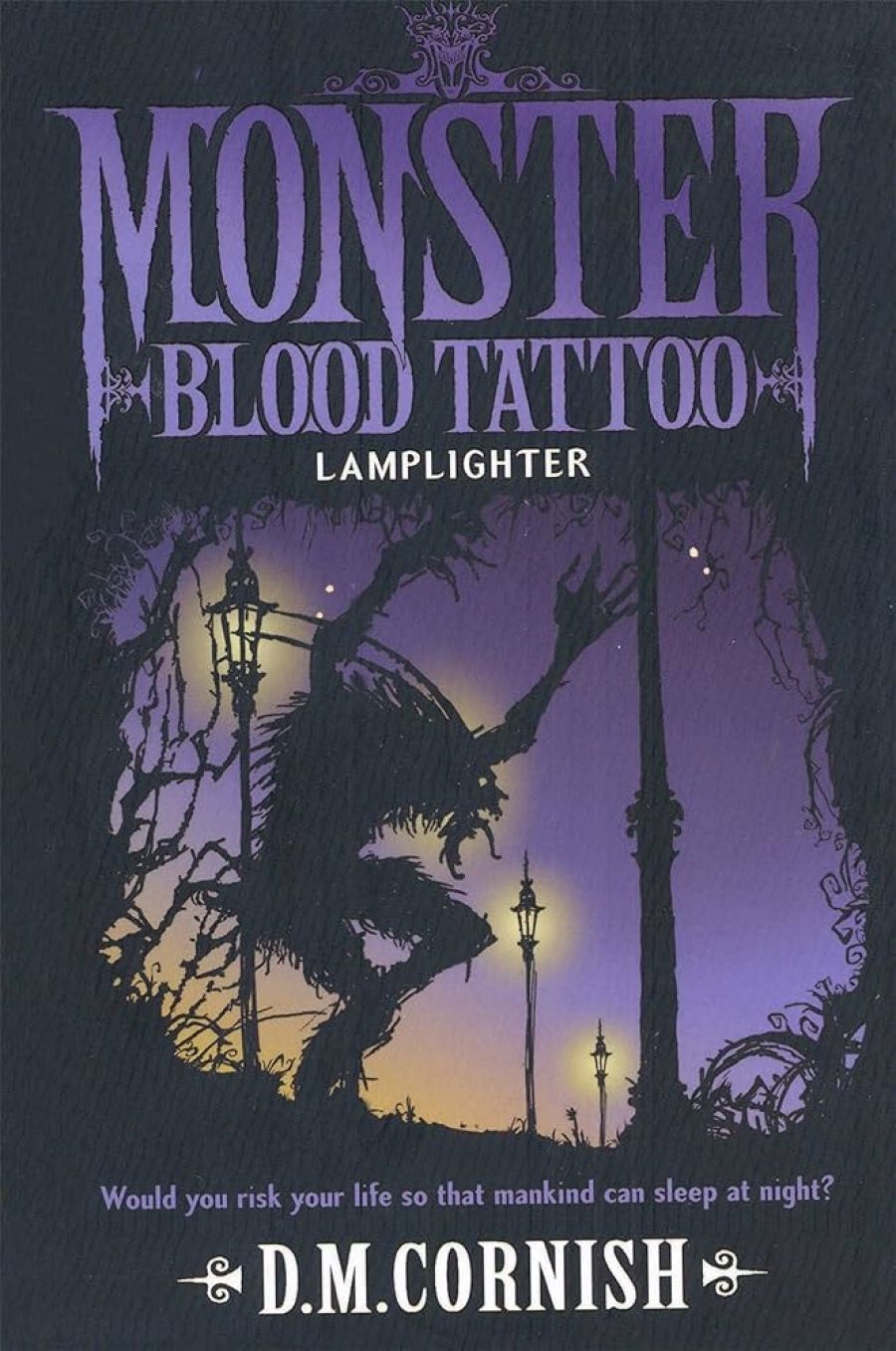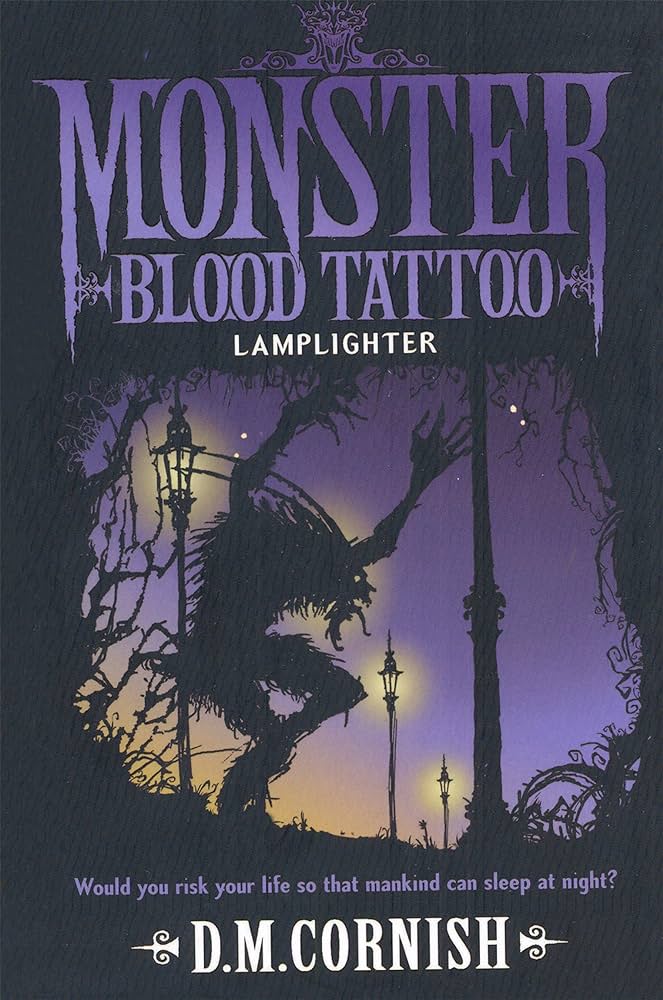
- Free Article: No
- Contents Category: Young Adult Fiction
- Custom Article Title: Spur to the imagination
- Review Article: Yes
- Article Title: Spur to the imagination
- Online Only: No
- Custom Highlight Text:
Nickers and bogles, fulgars and wits: these newly minted creatures populate the Monster Blood Tattoo series. This world has the depth and complexity that characterises all good fantasy, and fans of D.M. Cornish’s Aurealis Award-winning Foundling (2006) will eagerly continue the journey and be well rewarded for doing so. Beautifully presented, the second novel is as impressive inside as out.
- Book 1 Title: Lamplighter
- Book 1 Subtitle: Monster Blood Tattoo, Book Two
- Book 1 Biblio: Omnibus Books, $29.99 hb, 719 pp
- Book 1 Cover Small (400 x 600):

- Book 1 Cover (800 x 1200):

The setting, too, is vaguely familiar, focusing on a small section of the Half-Continent of the novel which echoes Europe. The world itself is mid-industrial and infused with inexplicable natural phenomena (something akin to magic but not named as such), juxtaposed with machines and firearms, and medieval fortresses designed to keep out marauding monsters and the palpable hostility of the untamed land itself. Add to this the costumed heroes, with their surgically endowed supernatural powers, and you have a hybrid of Dickens, Conrad and William Gibson for younger readers. While Foundling depicted waterscapes and iron-clad ships, this novel focuses on towering city-fortresses and threatening landscapes.
Lamplighter continues the career of young Rossamünd Bookchild, an orphan who slowly overcomes jibes about his effeminate name and demeanour. Having survived his unexpected adventures in the first book, he is ensconced in the manse of Winstermill as an apprentice Lamplighter. He is training to be a soldier–tradesman who takes pride in maintaining and lighting the great lamps which carve a swathe of light through the dark wilderness and make travel upon the Emperor’s roads possible. Lamplighters are at the forefront of the Empire’s ongoing battle to tame the land, push back the chaos and defend civilisation against the monsters. Part sponge and part clay, Rossamünd absorbs the ideology he is immersed in, and is shaped by his experiences.
This is a classic Bildungsroman narrative, the story of a boy learning to make his way in the world, take the initiative and make his own decisions. It also springs from the conventions of adventure fiction, but is in no way derivative. As Rossamünd’s mercurial mentor Europe states in the first novel, a life of adventure is also a life of violence, and his escalating theroscades (attacks by monsters) shock him out of the dreams of adventure he imbibes from his pamphlets of heroic exploits. Indeed, the novel’s self-reflexivity steers it away from the Boys’ Own subgenre towards the more critical strain evident in late-Victorian and twentieth-century adventure fiction.
As Lamplighter proceeds, Rossamünd finds that the certainties of the Empire’s invidist (anti-monster) ideology are questionable. He finds malevolence and corruption at the heart of the bastion against the monsters, and makes some unlikely friends among the ranks of the creatures that most humans despise. His rites of passage present him with an ambiguous moral universe, where decisions about what is the right thing to do are neither easy nor free of consequence.
This novel develops complex themes which will engage older readers but not necessarily alienate younger readers. An engagement with otherness in all its apparent monstrosity evolves into a recognition of the rank moral turpitude of many humans and of the Empire itself. Cornish also encourages readers to question the inherent rightness of bludgeoning the land into submission and eliminating its prior inhabitants. This reflects indirectly on contemporary issues, without proselytising. On the level of plot, important clues might be obvious, but even adult readers will enjoy seeing how they are played out in a suspenseful climax that rivals that of the first novel. With regards to readership, it must be said that the more Gothic and high-paced action scenes will demand substantial resilience or (de)briefing among some younger readers.
In an information- and image-saturated world, adults may well despair of a lack of engaging, quality fiction for younger readers. D.M. Cornish has filled this canvas, using his illustrations to enrich rather than dilute a well-written narrative based in a magnificently detailed and textured setting.


Comments powered by CComment